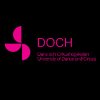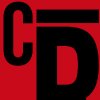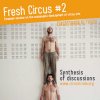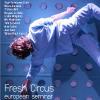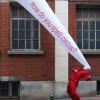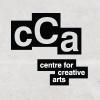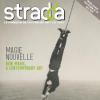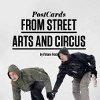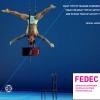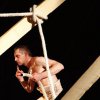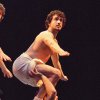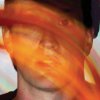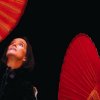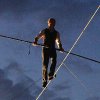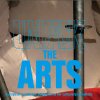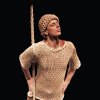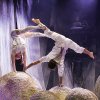Artistic Research and Aesthetics
CASCAS (Circus And Street Arts Come And See) was a European project to promote intercultural understanding and exchange. Between May 2010 and November 2011 it arranged four tours for four small groups of circus and street arts professionals in the project's partner countries (UK, Sweden, Finland and Belgium) as a way of introducing them to that country's conditions and working practices. As part of the project, four briefing documents were produced — short guides to the circus and street arts sectors in the partner countries that give a basic overview of government policy, key festivals and venues, example companies, etcetera.
CASCAS (Circus And Street Arts Come And See) was a European project to promote intercultural understanding and exchange. Between May 2010 and November 2011 it arranged four tours for four small groups of circus and street arts professionals in the project's partner countries (UK, Sweden, Finland and Belgium) as a way of introducing them to that country's conditions and working practices. As part of the project, four briefing documents were produced — short guides to the circus and street arts sectors in the partner countries that give a basic overview of government policy, key festivals and venues, example companies, etcetera.
CASCAS (Circus And Street Arts Come And See) was a European project to promote intercultural understanding and exchange. Between May 2010 and November 2011 it arranged four tours for four small groups of circus and street arts professionals in the project's partner countries (UK, Sweden, Finland and Belgium) as a way of introducing them to that country's conditions and working practices. As part of the project, four briefing documents were produced — short guides to the circus and street arts sectors in the partner countries that give a basic overview of government policy, key festivals and venues, example companies, etcetera.
CASCAS (Circus And Street Arts Come And See) was a European project to promote intercultural understanding and exchange. Between May 2010 and November 2011 it arranged four tours for four small groups of circus and street arts professionals in the project's partner countries (UK, Sweden, Finland and Belgium) as a way of introducing them to that country's conditions and working practices. As part of the project, four briefing documents were produced — short guides to the circus and street arts sectors in the partner countries that give a basic overview of government policy, key festivals and venues, example companies, etcetera.
A free excerpt from HorsLesMurs' Stradda magazine showcasing one of their dossiers – a collection of articles focused on a particular idea or artistic movement.
Following a residency in Paris in June 2009, seven critics and cultural commentators each wrote an article on the current state and future possibilities of circus criticism. The articles are presented in original language and English.
A collection of articles produced by the eight cultural journalists who attended a residency organised by Circostrada in the frame of Helsinki's Cirko Festival in May 2010. The pieces all respond in some way to the idea of contemporary circus' new and multifaceted aesthetics. The articles are presented in original language and English.
Published by DOCH's own press, Circoanalysis: Circus, Therapy and Psychoanalysis is the final thesis of the PhD John-Paul Zaccarini undertook at the university.
Published by the Czech contemporary circus centre Cirqueon, this document is an introduction to the various aspects of the CZ scene, covering a brief overview of the artform, government policy and levels of subvention, and operational models within the sector, as well as giving details on some key companies, festivals and organisations.
Documenting the second Fresh Circus seminar, which took place 12-13 April 2012 at Parc de la Villette in Paris, this publication collects reports from the event's ten breakout working groups. The seminar's uniting theme was an exploration of the 'sustainable development' of circus arts, with sessions covering such subjects as artistic residencies, cultural journalism, cooperation with businesses, the role of new media in developing audiences, and the effect of globalisation on circus aesthetics.
Published by Circostrada, this report covers the activity at the first Fresh Circus, a European seminar bringing together 288 professionals from all corners of contemporary circus (producers, directors, artists, critics, policy-makers, etcetera). The different chapters of the document cover the various thematic working sessions that made-up the main part of the seminar.
A free excerpt from HorsLesMurs' Stradda magazine showcasing one of their dossiers – a collection of articles focused on a particular idea or artistic movement.
A one-day symposium hosted by La Trobe University’s Centre for Creative Arts 5 December 2011, New Directions in Circus Research presented some of the recent projects and approaches adopted by researchers and scholars. The presenters included: Tomi Purovaara, Gail Kelly, Dr Jane Mullett, Rockie Stone, Dr Andrea Lemon, Hamish McCormick, Professor Peta Tait, Stine Degerbøl, Dr Gillian Arrighi, Dr David Carlin, Reuben Stanton, Associate Professor James Thom, Dr Kim Baston, Camilla Damkjaer, and Ivan Kralj.
A free excerpt from HorsLesMurs' Stradda magazine showcasing one of their dossiers – a collection of articles focused on a particular idea or artistic movement.
One of the outputs of the CASCAS (Circus and Street Arts Come and See) project, which saw four groups of industry professionals tour the circus and street arts scenes in the UK, Sweden, Finland and Belgium, Postcards From Street Arts and Circus is a short, pamphlet-length book written by the researcher Yohann Floch, who accompanied the tours in all four countries.
Written by the researcher Pascal Jacob and published by FEDEC, this PDF guide questions the goals of circus training and the needs of artists.
As part of the European residency project Unpack the Arts, ten cultural journalists visited CIRCa Festival in Auch 31 October - 3 November 2012 to encounter (in some cases for the first time) the many faces of contemporary circus.
As part of the European residency project Unpack the Arts, ten cultural journalists visited Circusstad in Rotterdam 1-5 May 2013 to encounter (in some cases for the first time) the many faces of contemporary circus.
As part of the European residency project Unpack the Arts, ten cultural journalists visited Cirko Festival in Helsinki 8-12 May 2013 to encounter (in some cases for the first time) the many faces of contemporary circus.
As part of the European residency project Unpack the Arts, ten cultural journalists visited Festival Novog Cirkusa in Zagreb 8-11 November 2012 to encounter (in some cases for the first time) the many faces of contemporary circus.
As part of the European residency project Unpack the Arts, ten cultural journalists visited two festivals in Belgium, Hors Pistes & La Piste aux Espoirs, 28 February - 3 March 2013 to encounter (in some cases for the first time) the many faces of contemporary circus.
As part of the European residency project Unpack the Arts, ten cultural journalists visited Humorologie festival in Kortrijk-Marke, Belgium 27-30 June 2013 to encounter (in some cases for the first time) the many faces of contemporary circus.
As part of the European residency project Unpack the Arts, ten cultural journalists visited the Ny Circus Festival in Copenhagen 15-18 August 2012 to encounter (in some cases for the first time) the many faces of contemporary circus. Seeing four shows – GLiMT's Er du os?, La Meute's Tragédie Grecque, Cie Un loup pour l'homme's Face Nord, and Subliminati Corporation's #File_Tone – and interviewing the artists after their performances, the journalists then wrote the articles collected here – published in the original language and in English translation.
As part of the European residency project Unpack the Arts, ten cultural journalists visited Subcase in Stockholm 13-16 February 2013 to encounter (in some cases for the first time) the many faces of contemporary circus. Seeing five shows – Los Galindos' Maiurta, Chipmunk Forge's Phågel, Ruby Rose's EAT IT!, Patrik and Wes' Between Someonesons and Cirkus Cirkör's Knitting Peace – and interviewing the artists after their performances, the journalists then wrote the articles collected here – published in the original language and in English translation.
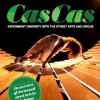
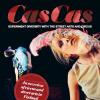
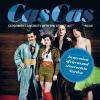
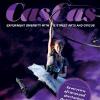
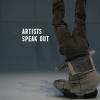
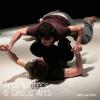
![Arts Writers & Circus Arts [vol. 2] Arts Writers & Circus Arts [vol. 2]](http://sideshow-circusmagazine.com/sites/default/files/styles/100px-100px/public/research/arts-writers-circus-2-circostrada.jpg?itok=PL9QdohH)
